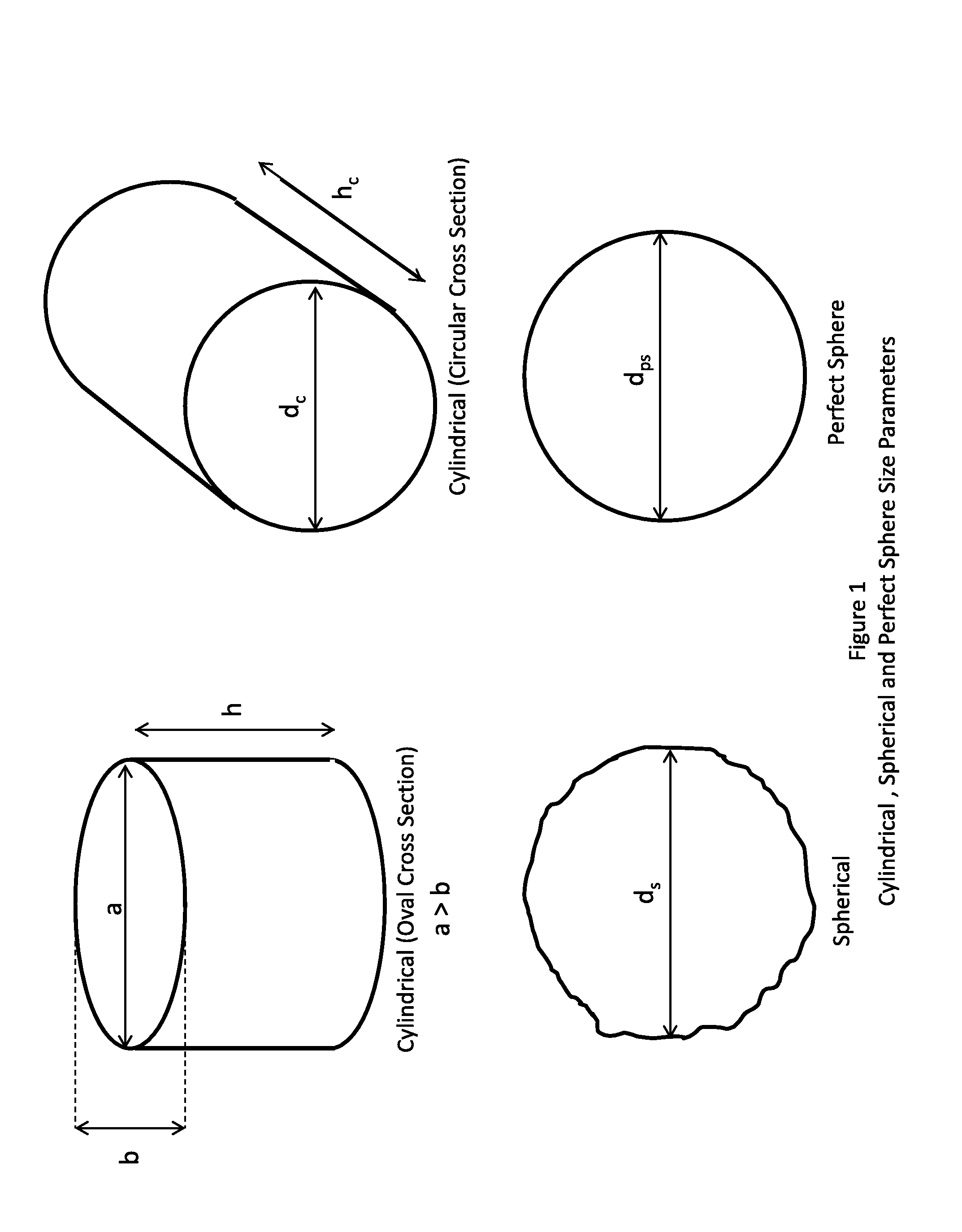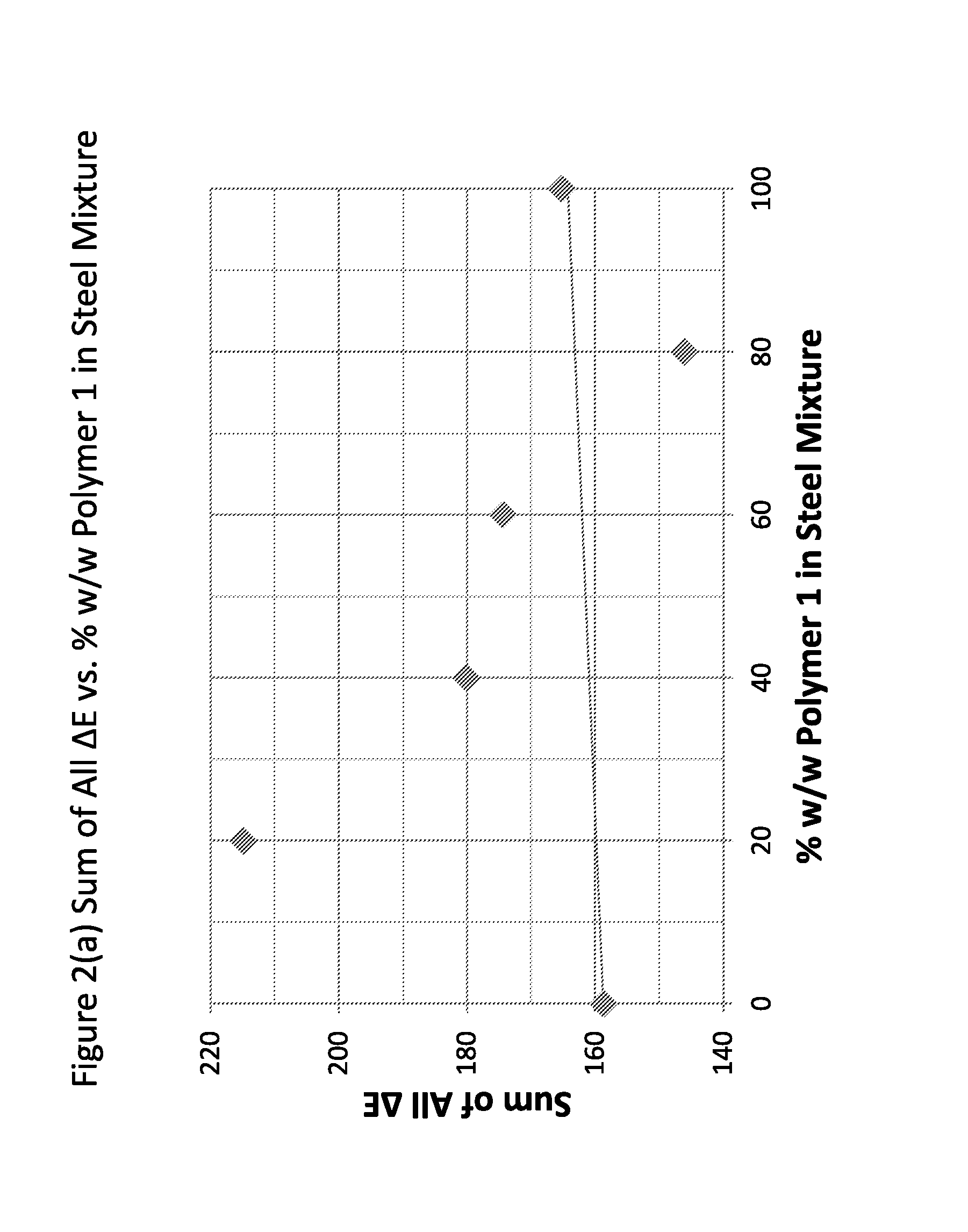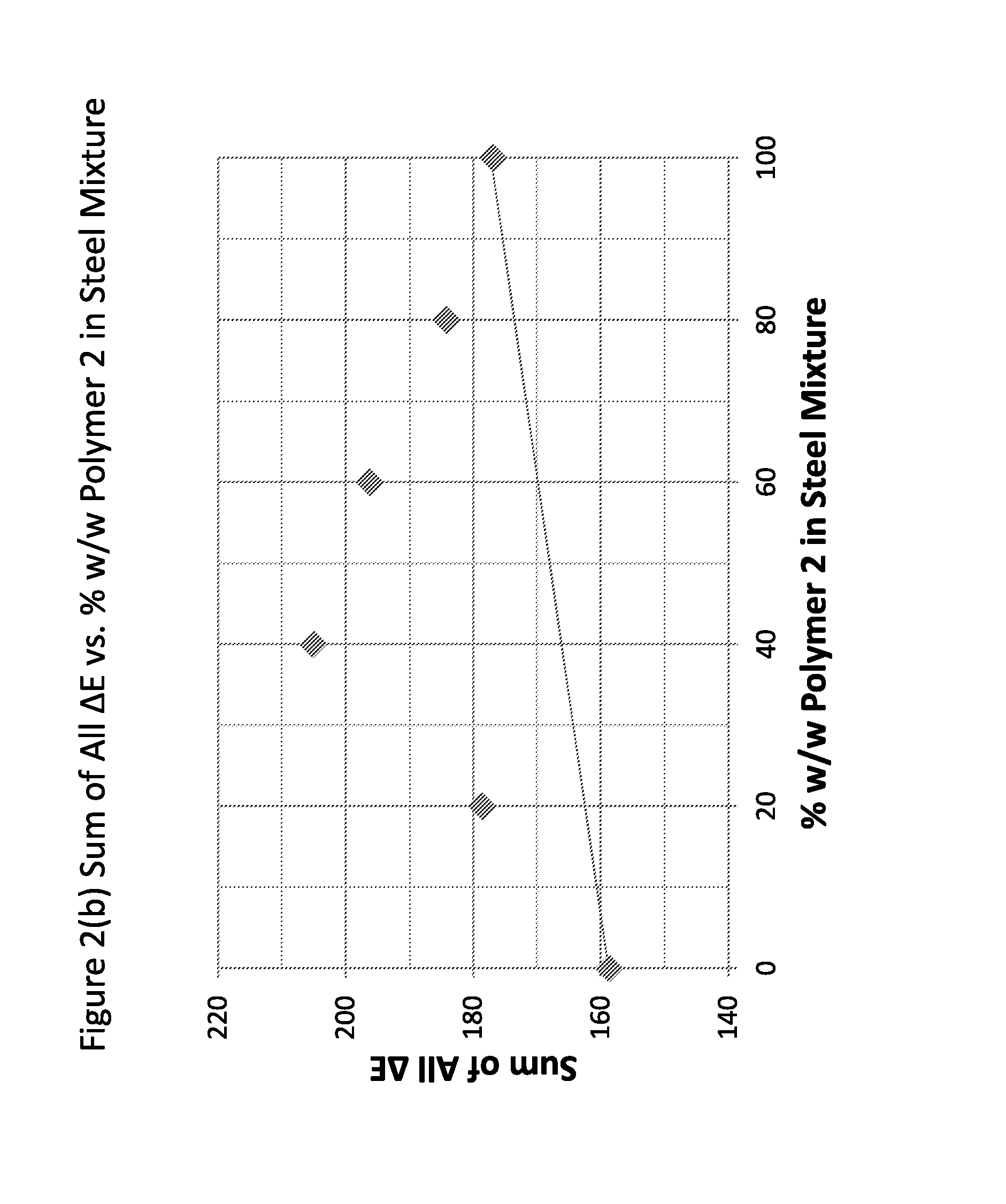Cleaning method
a technology of soiled substrates and cleaning methods, applied in the direction of detergent compounding agents, inorganic non-surface active detergent compositions, applications, etc., can solve the problems of non-polymer particles increasing cleaning performance far beyond what could reasonably be expected, and achieves improved cleaning performance, reduced surface area, and strong mechanical action
- Summary
- Abstract
- Description
- Claims
- Application Information
AI Technical Summary
Benefits of technology
Problems solved by technology
Method used
Image
Examples
example 1
Non-polymeric Particles
[0140]Cleaning trials were carried out in order to test the efficacy of two readily available non-polymeric particulate cleaning materials versus a control with no particles added (see Table 1 and FIG. 1).
TABLE 1PARTICULATE CLEANING MATERIALS & CONTROLParticleParticleParticleParticleParticleDiameterVolumeDensityMassParticle TypeShape(mm)(mm3)(g / cm3)(mg)GlassPerfectdps = 4.754.43.5191SphereSteelPerfectdps = 4.444.67.9351SphereNone (Control)N / AN / AN / AN / AN / A
[0141]Washes were carried out in a sealed wash rig (a rotatably mounted drum of 50 cm diameter and 70 cm depth, equipped with lifter 10 cm tall) according to the conditions described in Table 2.
TABLE 2WASH CONDITIONSWashloadWashWashParticle:ClothParticleMassTemperatureDurationRatioWater:ClothDetergentType(kg)(° C.)(mins)(w / w)Ratio (w / w)(g / kg)RinsedGlass4.0Ambient201:11.2:130.0Yes(20° C.)Steel4.0Ambient201:11.2:130.0Yes(20° C.)None4.0Ambient20N / A1.2:130.0Yes(Control)(20° C.)
[0142]The washload comprised 4.0 kg in...
example 2
Mixtures of Non-Polymeric and Polymeric Particles
[0146]Cleaning trials were also carried out to test the efficacy of mixtures of non-polymeric and polymeric particulate cleaning materials, versus the 100% w / w non-polymeric and 100% w / w polymeric options and, again, versus a control with no particles added (see Table 4 and FIG. 1).
TABLE 4PARTICULATE CLEANING MATERIALS & CONTROLParticleParticleParticleParticleParticleDiameterabhVolumeDensityMassParticle TypeShape(mm)(mm)(mm)(mm)(mm3)(g / cm3)(mg)SteelPerfectdps = 4.4N / AN / AN / A44.67.9351 SpherePolymer 1 (BASFSphericalds = 2.7N / AN / AN / A10.41.113Ultramid ® B36,Nylon 6)Polymer 2 (INVISTACylindricalN / A3.02.22.111.11.416Polyclear ® 1101,(OvalpolyethyleneCrossterephthalate)Section)None (Control)N / AN / AN / AN / AN / AN / AN / AN / A
[0147]Washes were carried out in a sealed wash rig (a rotatably mounted drum of 50 cm diameter and 70 cm depth, equipped with lifter 10 cm tall) according to the conditions described in Table 5.
TABLE 5WASH CONDITIONSWashloadWashWas...
PUM
| Property | Measurement | Unit |
|---|---|---|
| volume | aaaaa | aaaaa |
| average volume | aaaaa | aaaaa |
| molecular weight | aaaaa | aaaaa |
Abstract
Description
Claims
Application Information
 Login to View More
Login to View More - R&D
- Intellectual Property
- Life Sciences
- Materials
- Tech Scout
- Unparalleled Data Quality
- Higher Quality Content
- 60% Fewer Hallucinations
Browse by: Latest US Patents, China's latest patents, Technical Efficacy Thesaurus, Application Domain, Technology Topic, Popular Technical Reports.
© 2025 PatSnap. All rights reserved.Legal|Privacy policy|Modern Slavery Act Transparency Statement|Sitemap|About US| Contact US: help@patsnap.com



